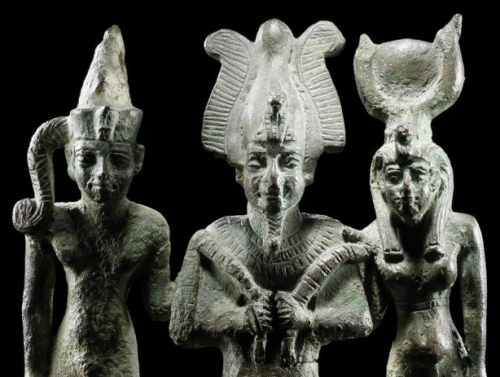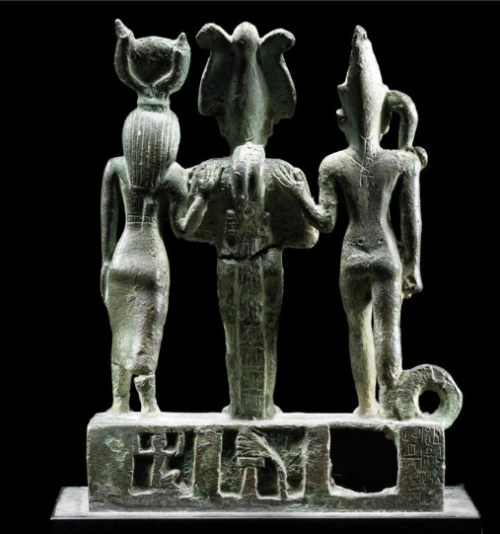archaicwonder:Egyptian Bronze Triad (Osiris, Isis, Horus) c. Late Period, 664-30 BCThis triad
archaicwonder:Egyptian Bronze Triad (Osiris, Isis, Horus) c. Late Period, 664-30 BCThis triad represents the Osiris myth which is the most elaborate and influential story in ancient Egyptian mythology. It concerns the murder of the god Osiris, a primeval king of Egypt, and its consequences. Osiris’ murderer, his brother Set, usurps his throne. Meanwhile, Osiris’ wife Isis restores her husband’s body, allowing him to posthumously conceive a son with her. The remainder of the story focuses on Horus, the product of Isis and Osiris’ union, who is first a vulnerable child protected by his mother and then becomes Set’s rival for the throne. Their often violent conflict ends with Horus’ triumph, which restores order to Egypt after Set’s unrighteous reign and completes the process of Osiris’ resurrection. The myth, with its complex symbolism, is integral to the Egyptian conceptions of kingship and succession, conflict between order and disorder and, especially, death and the afterlife. It also expresses the essential character of each of the four deities at its center, and many elements of their worship in ancient Egyptian religion were derived from the myth.The figure depicts Osiris, wearing the atef crown flanked by Horus the child, wearing the double crown with a sidelock and on the other side, Isis, surmounted by the sun disc with horns, shown standing on a hollow plinth, the front cast in relief with the child god squatting, flanked by Isis and Thoth in adoration, a panel on either side with falcon headed soul of Pe and jackal headed soul of Nekhen, the reverse of the plinth has panels with a lotus on stand and a human male figure, probably the deceased in jubilation posture, next to the square opening, an inscription giving the donor’s identity: ‘May Isis give life to Wedja-hor son of Pa-di-hor’, the short sides of the plinth with further souls of Pe and Nekhen. -- source link
#history#ancient#ancient history#egypt


